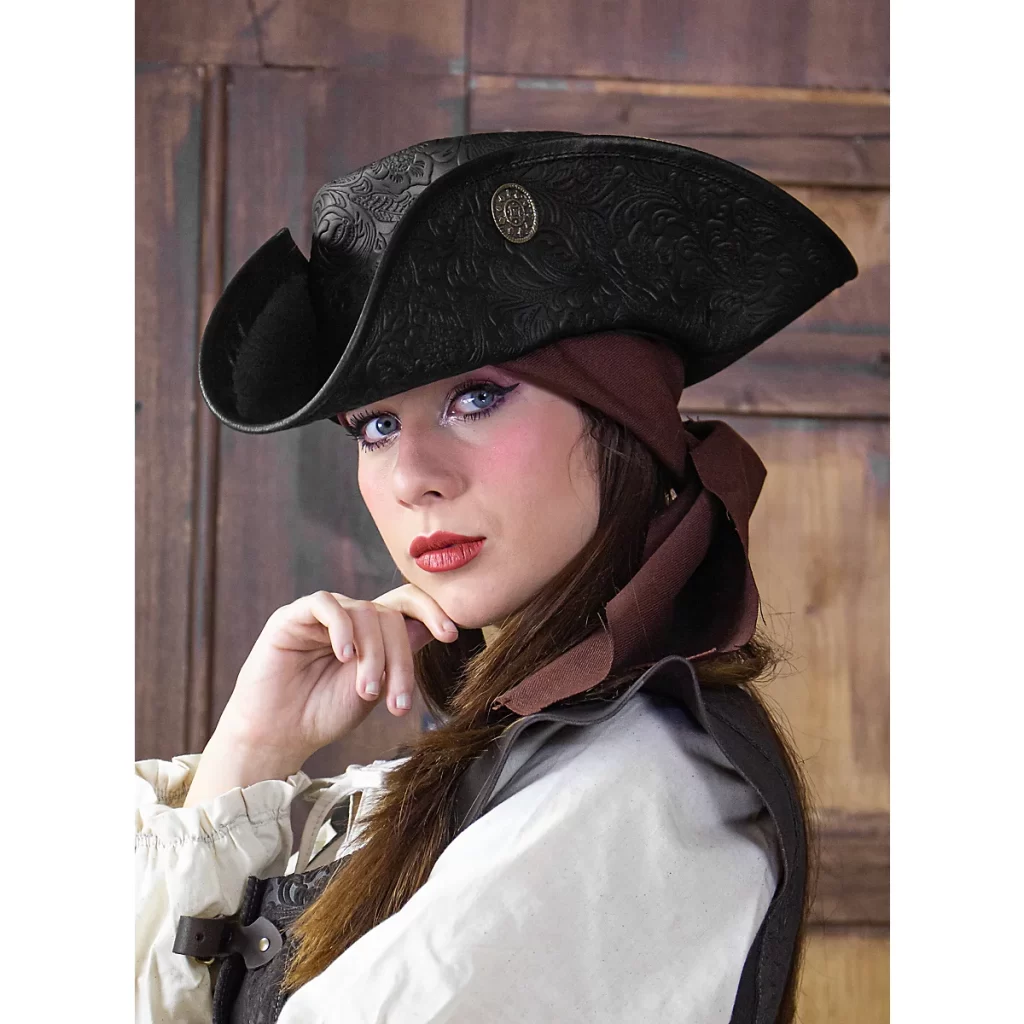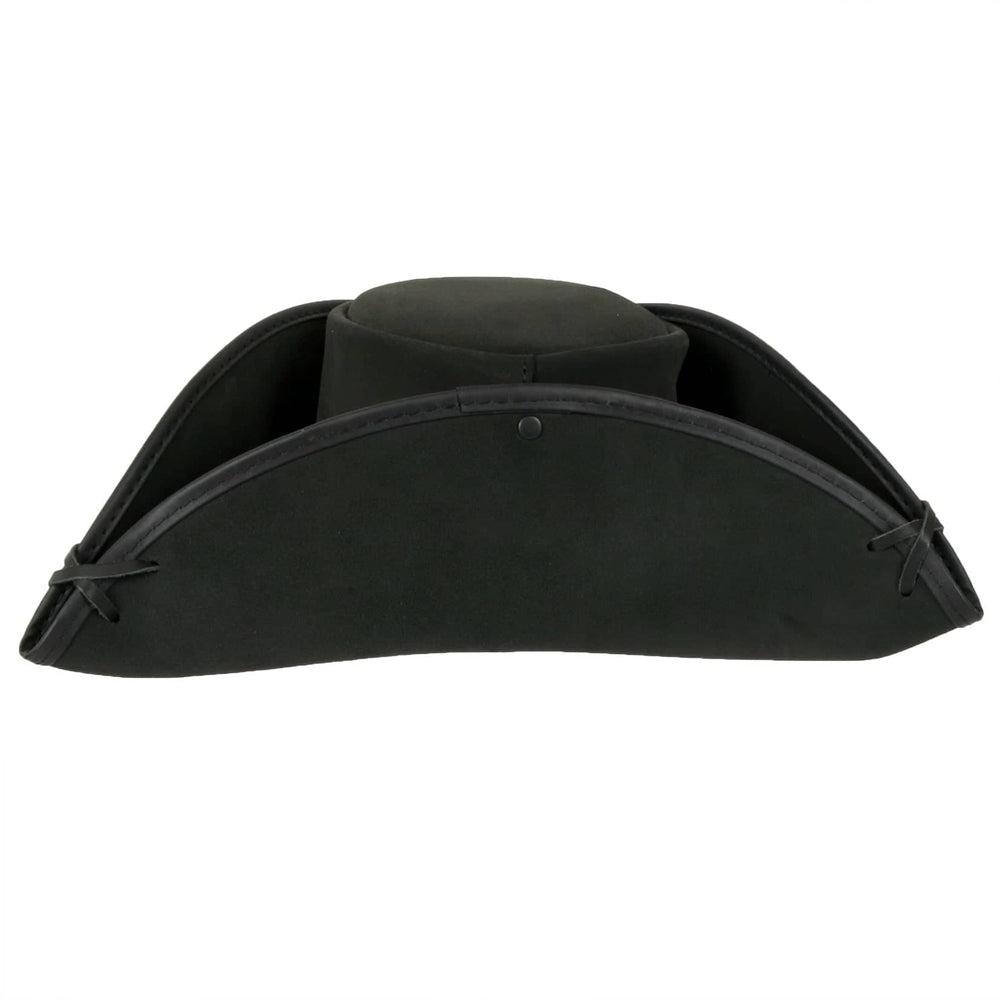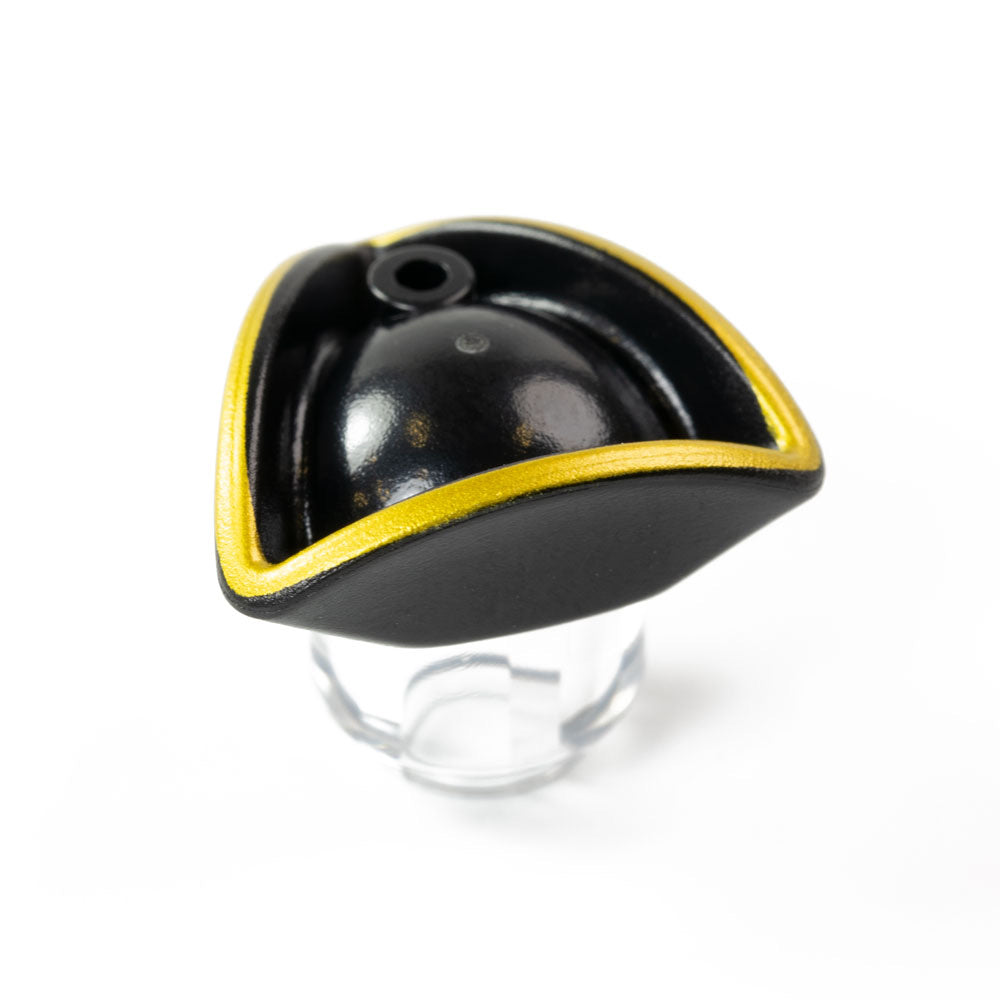Introduction
The tri-corner hat, also known as the tricorn or three-cornered hat, is an iconic symbol deeply ingrained in the visual narrative of early American history. This distinctive headwear, with its unique triangular shape, was not only a practical piece of clothing for the time but also carried significant cultural and social meanings that have come to define the style of the era. From the streets of colonial towns to the battlefields of the Revolutionary War, the tri-corner hat remains a powerful emblem of the birth of a nation.
Origins and Design
The tri-corner hat originated in Europe during the late 17th century and gained popularity throughout the 18th century. Its design evolved from the broad-brimmed hats worn by earlier generations, which could be folded and shaped into various forms for convenience and fashion. The hat’s defining characteristic is its three-sided shape, achieved by folding up the sides of a wide brimmed felt or woolen hat and securing them with ribbon, braid, or buttons. This versatile design allowed wearers to manipulate the hat’s formality or informality by adjusting the brim’s angle and tightness of the folds.
Functionality and Practicality
In early America, the tri-corner hat served several practical purposes beyond mere sartorial elegance. Its wide brim provided ample shade from the harsh sun, protecting the wearer’s face and neck from burns, while the water-resistant materials used in its construction shielded the head from rain. For military officers and soldiers, the high crown helped to deflect sword slashes, and the hat could even serve as a makeshift pillow when on campaign. Furthermore, the hat’s rigid structure allowed it to remain intact when hung from a hook or laid aside, preserving its shape and longevity.
Social and Cultural Significance
Beyond its functional aspects, the tri-corner hat became a potent symbol of status, profession, and political allegiance in colonial America. Gentlemen, merchants, and officials donned these hats as a mark of their social standing, often adorned with elaborate hatbands, feathers, or badges to further distinguish themselves. Military officers wore them as part of their uniforms, with distinct colors and insignia reflecting their rank and regiment. During the Revolutionary period, the tri-corner hat took on an added layer of symbolism, becoming associated with patriotism and the fight for independence. It was worn by prominent figures such as George Washington, embodying the spirit of the nascent nation and its struggle against British rule.
 Decline and Legacy
Decline and Legacy
As fashions evolved in the late 18th and early 19th centuries, the tri-corner hat gradually fell out of everyday use, supplanted by simpler, rounder styles like the top hat and the bicorne. However, its legacy endures as a symbol of early American identity, frequently depicted in historical paintings, literature, and reenactments. The hat has become synonymous with figures like Paul Revere, the Minutemen, and other revolutionaries, encapsulating the spirit of the era and serving as a tangible link to America’s founding.
In Modern Context
Today, the tri-corner hat continues to hold a special place in American cultural consciousness. It is a staple of historical reenactments, where enthusiasts meticulously recreate the attire of the period to bring history to life. It also features prominently in patriotic imagery, educational materials, and even as a popular souvenir item at historical sites across the country. Moreover, the hat occasionally makes appearances in contemporary fashion and popular culture, demonstrating its enduring appeal and symbolic power.
Materials Needed:
- Felt or heavy fabric (wool, cotton twill, or velvet work well), approximately 1 yard depending on head size
- Scissors
- Fabric measuring tape
- Sewing pins
- Needle and thread or sewing machine
- Iron and ironing board
- Cardboard or heavy paper for making a pattern
- Ribbon or bias tape for hat band (optional)
- Decorative feathers, buttons, or other embellishments (optional)
Measure and Create a Pattern
Begin by taking measurements for your hat. You’ll need the circumference of your head and the desired depth of the hat from the brim to the top (usually around 4-6 inches).
Using cardboard or heavy paper, draw a rectangle that is as wide as the head circumference plus an extra 2 inches for overlap and seam allowance, and as long as the depth of the hat plus twice the brim width you desire (typically 2-3 inches).
Cut out this rectangle, then divide it into three equal parts lengthwise, marking the folds with a pencil. These will become the creases for the three corners of your hat.
Cut the Fabric
Lay your fabric flat, folded in half if necessary, and pin your pattern onto it. Cut around the pattern, ensuring you have two identical pieces of fabric.
Sew the Panels Together
Place the two cut-out pieces of fabric together with their right sides facing each other. Sew along the sides, leaving the top open. If using a sewing machine, use a straight stitch and a 1/2-inch seam allowance. Remember to reinforce the stitches at the corners for added durability.
 Turn and Shape
Turn and Shape
Turn the hat right side out through the open top. Use a chopstick or a blunt object to gently push out the corners and ensure they are well-defined.
Create the Brim
Fold up the bottom edge of the hat to form the brim. The width of the fold will determine how wide your brim is. Pin in place and sew along the inside edge of the fold to secure the brim.
Add a Hat Band (Optional)
Measure the circumference of the hat where the brim meets the crown. Cut a piece of ribbon or bias tape to this length plus a bit extra for overlapping and sewing. Sew the ends of the ribbon together to form a loop
Finishing Touches
Iron your hat gently to remove any wrinkles and give it a crisp shape. You can further personalize your tri-corner hat by adding a feather, a bow, or any other decorations that suit your taste and the occasion.
Try It On and Adjust
Place your newly crafted tri-corner hat on your head, adjusting the fit as needed. If the hat feels loose, consider adding some elastic or ribbon ties under the chin.
Creating a traditional tri-corner hat not only provides a unique accessory but also offers a hands-on experience connecting you with history. With a little time and effort, you can proudly wear a piece of the past, whether for a themed party, historical reenactment, or simply as a conversation starter. Enjoy your crafting journey and the admiration of others as you showcase your handiwork!
From Historical Reenactment to Haute Couture
Despite falling out of everyday use by the late 18th century, the tri-corner hat has never fully disappeared from public consciousness. It has maintained a presence in historical reenactments, theater productions, and cinematic representations of the period, keeping its legacy alive for successive generations.
In the realm of high fashion, designers have periodically revisited the tri-corner hat, reinterpreting it to suit modern tastes and sensibilities. These adaptations often blend historical accuracy with contemporary aesthetics, using luxurious materials, bold colors, or unexpected embellishments to create fresh, avant-garde looks. Design houses such as Alexander McQueen, Vivienne Westwood, and Jean Paul Gaultier have all, at various points, incorporated elements of the tri-corner hat into their collections, showcasing its versatility and ability to evoke a sense of history and drama.
Cultural Significance and Pop Culture Moments
Beyond the runway, the tri-corner hat has made memorable appearances in pop culture. Further cementing its place in the collective imagination. From the whimsical interpretations seen in Disney’s “Pirates of the Caribbean” franchise to its more serious renditions in historical dramas like HBO’s “John Adams,” the hat has been employed to evoke a sense of bygone eras, adventure, or revolutionary spirit.
Its symbolic power extends to political satire and social commentary as well. Where it has occasionally been used to reference historical revolutions or critique modern politics through visual metaphor. In this way, the tri-corner hat transcends mere fashion, functioning as a cultural artifact that can spark dialogue and reflection.
In conclusion
The tri-corner hat is far more than a simple article of clothing; it is a testament to the style, functionality. And symbolism embedded in early American history. Its iconic design has transcended time, serving as a tangible reminder of the nation’s birth, struggles. And the individuals who played pivotal roles in shaping its destiny. Through its enduring presence in art, literature, and modern interpretations, the tri-corner hat remains an indelible symbol of American heritage.
